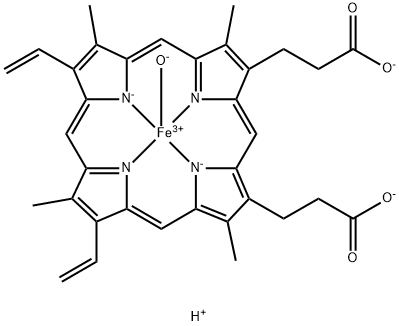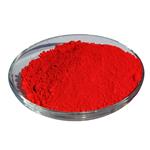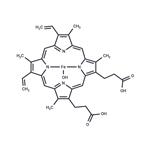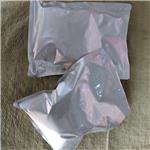Produced from red blood cells, Hematin is a bluish-black or brownish pigment compound derived from hemoglobin by removal of the protein part and oxidation of the iron atom from ferrous Fe2+ to the ferric Fe3+ state, which does not combine with oxygen. It is effective to inhibit the synthesis of porphyrin and, at the same time, stimulate the synthesis of globin. It involves in the formation of cytochromes and peroxidases in the cell. Hematin is also a pharmaceutical used in the treatment of porphyria, which can be administered intravenously to halt the attack of acute porphyria. It functions in the liver to accelerate the production of heme and thus preventing the further accumulation of heme precursors, porphyrins, which is effective to alleviate the symptoms of porphyria.
https://en.wikipedia.org/wiki/Haematin
http://house.wikia.com/wiki/Hematin
https://en.oxforddictionaries.com/definition/us/hematin
http://medical-dictionary.thefreedictionary.com/hematin
Dark crystals with metalic luster
Hematin was used in a study to test in vitro activities of the Rx-01 oxazolidinones against hospital and community pathogens. It was also used in a study to test in-vitro bacterial identification using fluorescence spectroscopy with an optical fiber system.
Indicator, biological stain.
The hydroxide of heme. Not to be confused with
hematein.
Hematin is a hydroxide of heme. It may be used to tre at acute porphyric attacks. Hematin suppresses the hepatic aminolevulinic acid (ALA) function and replenishes cytochrome action by restoring the endogenous heme deficit. Early administration of hematin can prevent irreversible neuronal damage induced due to metabolic disorders.
Crystallise it from pyridine. Dry it at 40o in vacuo.[Beilstein 26 III/IV 3047.]



